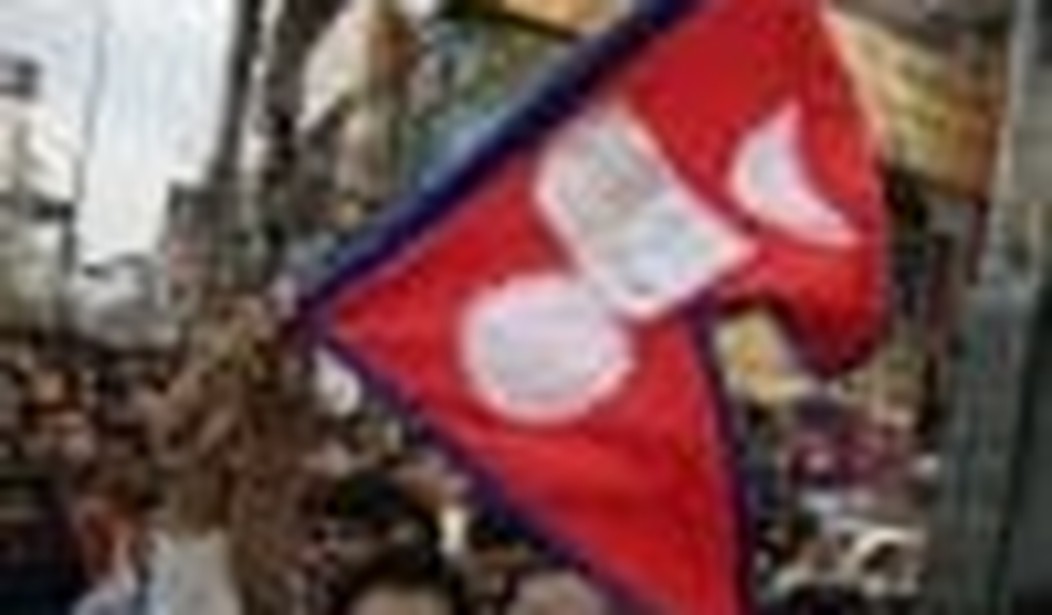Until about a decade ago it was unthinkable for many Nepali people to imagine their country without a king. Today they are all over the streets celebrating the abolition of the 240-year-old monarchy.
The first meeting of the assembly that was elected on April 10 to draft a new constitution declared Nepal a republic on May 28. The last king of Nepal, Gyanendra Shah, was given 15 days to vacate the Narayanhitti palace. Within hours of the declaration the royal flag –insignia of the Shah dynasty– was downed by the palace officials and the national flag of Nepal was hoisted. Authorities had been under immense pressure from the pro-republican crowds protesting outside the palace and demanding the immediate ouster of Gyanendra Shah. The replacement of the flag was merely a symbolic act, but one that carried a great significance. As soon as the national flag was hoisted, the cheering crowd dispersed.
So what happened in Nepal in the past decade or so that people are celebrating the abolition of a monarchy that, in fact, unified Nepal some 240 years ago? “The first and foremost credit for the republic goes to none other than the Maoists,” says the special, front-page editorial of the Kathmandu Post published a day after the declaration, with the headline “Viva La Republica” above its masthead. The Maoists started their “People’s War” in 1996 aiming to do away with the monarchy and establish a communist regime in Kathmandu. The “People’s War,” initially dismissed by the democratically elected government and other legitimate political forces of Nepal, took 14,000 lives before it was ended with the Maoists signing a peace agreement in 2007. The Maoists controlled large parts of rural Nepal through the combination of fear, intimidation, a spirited support base, and taking advantage of the lack of security in those areas. They also exploited the frustrations created in people by the inefficiencies of the government to deliver. The spread of the Maoist movement crumbled the monarchy that was traditionally based on feudalism. People became aware of their rights and they realized that kings are not the incarnation of God as they had been taught for centuries.
Another significant blow to the monarchy came in June 2001 when the entire family of then-King Birendra was killed, allegedly by his drunken son, then-Crown Prince Dipendra. Gyanendra was the only member of the royal family who didn’t take part in that Friday night dinner party in the Narayanhitti palace. He was in a different city. The only persons who survived in the massacre were his wife Komal and son Paras, who is notorious for indiscriminately shooting in discos, drunk driving, and killing people with his high-speed car. There is no proof of his involvement in the massacre but many people on the street believe Gyanendra had some sort of role. The family of the murdered Birendra was popular among Nepali people because he maintained his status as the constitutional monarch since 1990, when a popular movement overthrew his direct rule, which was started by his father in 1960. But Gyanendra, even when he was a prince, wasn’t popular and he became more disliked after he was crowned in mysterious circumstances.
The third blow to the monarchy came in February 2005 when Gyanendra, propelled by his autocratic ambition, staged a coup by dismissing a multi-party government, suspending freedom of expression, and imposing a draconian state of emergency. As the war with the Maoists intensified, pro-democracy people went on the streets demanding restoration of democracy. Meanwhile, the Maoists and the alliance of the opposition pro-democracy parties struck a 12-point deal that brought them closer and against the royal rule. That agreement also gave the people a hope that if Gyanendra were defeated and replaced by the new alliance of the Maoists and other political parties, peace would also be restored in Nepal. The Maoists stopped the armed fight to assist the pro-democracy parties in launching a peaceful agitation in April 2006 that finally forced Gyanendra to buckle down.
The parliament that had been dismissed by the king in 2002 (well before the 2005 coup) was restored and the parliament passed a Magna Carta-like declaration that stripped many of the king’s political and cultural rights and privileges. The Maoists and the government signed a peace agreement; the Maoists joined the government under a new interim constitution, which was amended for the third time in December 2007 to declare Nepal a republic with the provision that the first meeting of the Constituent Assembly would implement that declaration. The Assembly, elected on April 10 with the Maoists as the largest party, approved that constitutional provision with an overwhelming majority: 560-4. The international community, including India and the United States, which still puts Maoists on its list of foreign terrorist organizations, has welcomed the declaration.
Even though the world’s only Hindu unitary kingdom has been turned into a secular federal democratic republic, Nepal’s economic and political challenges are far from over. As the celebrations are going on, political leaders are holding power-sharing meetings to finalize the structure of the next government and the powers of the new president. After they are done with this immediate challenge, they will be faced with an even more formidable one: restructuring the state of Nepal into federations. Parties differ greatly on the issue. Some say federations should be delineated on the basis of ethnicity while others think that would be disastrous, and push for the geographic basis. Then there is the Herculean task of uplifting the lives of the people of one of the world’s poorest countries. The Maoist chairman Prachanda, who is tipped to lead the next government, has talked about “the economic miracle after the political miracle.” But will that miracle happen?
That’s a million dollar question that Nepalis are asking right now in Nepal.









Join the conversation as a VIP Member